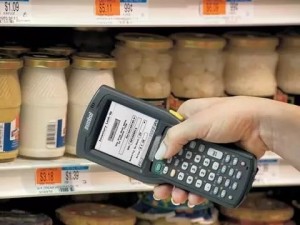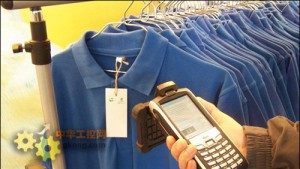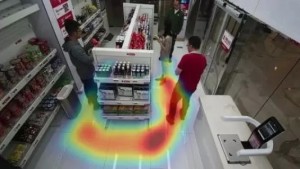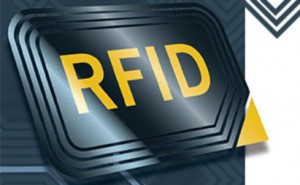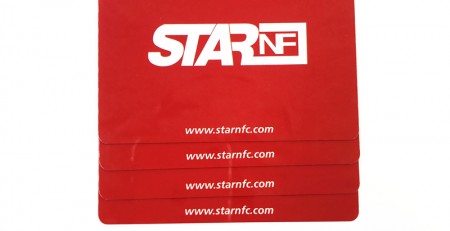RFID application in the Retail industry-Case study
With the pioneering application of RFID technology in the export-oriented commodity manufacturing industry,the rising labor costs of the retail industry, the increasing demand for logistics costs, the need for retail companies to compete and develop, and the rise of unmanned retail/smart retail, It will provide the impetus for the rapid application of RFID technology in modern retail industry. It can be predicted that RFID technology will play an increasingly important role in enhancing the competitiveness of modern retail enterprises.We are RFID cards suppliers and we will provide more RFID cards.
The essence of RFID (Radio Frequency Identification) is to realize the identity and information identification of items using radio frequency technology (RF). Since 1937, RFID technology has begun to take shape, and it has been applied to military, laboratory and other fields. It has developed an air traffic control system, and a shopping mall anti-theft system. With the development of the Internet of Things industry, RFID technology has become more and more popular, and it is applied in our daily life, bringing convenience and convenience to people’s lives.
From the procurement, storage, packaging, loading and unloading, transportation, distribution, sales to service, the entire supply chain is interconnected. Enterprises must grasp the flow and changes of the entire business flow, logistics, information flow and capital flow in real time, while RFID effectively provides the retail industry with input/output of business operation data, control and tracking of business processes, and reduction Error rate. Therefore, the attractiveness of RFID technology in the retail industry that focuses on logistics and inventory management is considerable, and the retail giants have also placed great enthusiasm on it.
This article will take an inventory of RFID applications in the retail industry (cases).
Application scenario 1:
RFID-based supply chain management in supermarket stores
1, Wal-Mart
Wal-Mart has always been known for its ability to apply new technologies to its supply chain and retail management. Following the launch of communications satellites for data exchange and logistics management in the 1980s and the vigorous implementation of barcode systems on commodities, the world’s No. 1 retail giant targeted RFID technology in 2005, and Wal-Mart demanded its top 100 suppliers Since January has started to use RFID tags and developed a fully functional supply and retail system based on RFID and a global satellite positioning system to achieve zero inventory management requirements. The introduction of RFID tags has further enhanced Wal-Mart’s supply chain efficiency: it took several hours to complete the inspection of the goods on the shelves before, but now it takes only 30 minutes to complete.
Wal-Mart retail stores have a wide range of goods, ranging from 80,000 to 100,000, and more than 900 items are automatically selected every week. In the era of manual operation orders, such large workloads are prone to errors; and automated workflows based on RFID technology can automatically place orders, sort and filter, which can greatly reduce the inventory of goods and increase the flow rate of funds. The visibility of the warehouse has been greatly improved, allowing suppliers and managers to see the ratio of inventory and arrivals at a glance.
A quantitative relationship test conducted by the University of Berkeley for Wal-Mart shows that by using RFID, the shortage of goods is reduced by 16%, which indicates a 16% increase in sales; and the replenishment rate of goods using RFID barcodes is higher than that of unlabeled goods 3 times faster. Retail industry analysts estimate that Wal-Mart can save $8.35 billion annually by using RFID cards technology.
2, Metro
In 2002, Metro, the world’s third-largest retailer, announced the “Future Store” program, announcing the adoption of RFID technology throughout its supply chain. The program has attracted more than 50 partner companies to jointly develop and test applications for IoT RFID technology, covering all aspects of the retail supply chain, including inventory, transportation, logistics, warehousing, and even the retail in-store customer buying experience. At the largest-volume Unna distribution center, Metro also built a comprehensive tracking system for RFID pallets and deployed multiple RFID applications. In 2011, Metro announced the full adoption of RFID technology throughout the supply chain and its “Future Store” in Rheinberg, Germany. At present, Metro’s RFID application technology has grown to the second generation.
According to the latest survey data from Metro at Berkeley, after using the RFID system to identify pallets, delivery confirmations, and warehousing, the average inspection and unloading time per truck is 15 to 20 minutes. At the same time, the supply chain is not in place. The goods were discovered in time, improving inventory accuracy, increasing inventory availability by 11%, out of stock by 11%, and cargo loss by 18%; in addition, warehouse manpower expenses were reduced by 14%.
It is not difficult to see that RFID-based fully electronic finished product supply chain management can share sales, inventory, cost and other information with suppliers in real time. Suppliers can keep abreast of the sales and inventory status of their products, significantly reduce communication costs and replenishment time, and have a more accurate grasp of market reactions. Practice has proved that many international retail giants have adopted the advanced supply chain management system based on RFID technology, which has created a competitive advantage in the retail field.
Application scenario 2: RFID-based inventory management for footwear retailers
RFID application scenarios and technical inventory in the retail industry
With the increasing penetration of RFID tags in the retail industry, apparel is gradually introducing RFID technology into the entire management system. It is expected that penetration will increase rapidly in the next few years. According to statistics, at the end of 2016, the global chain retail industry, which is dominated by clothing, demanded more than 5 billion RFID tags. Such as foreign Decathlon, ZARA, Uniqlo, domestic Haishu home, La Chapelle, UR, Fu Anna have fully implemented RFID projects.
RFID electronic tags are used in the apparel industry for two reasons. First, the labels in this scenario are consumables. Once the electronic tags are transferred to the final link, that is, the consumers, the mission of the electronic tags is completed. Another reason is that due to its lower and lower manufacturing costs, the average cost of a single electronic tag in this application scenario in China is less than 1 yuan, which is generally for the price of a garment,Less than 1%.
1, Decathlon
Decathlon set up its own RFID company, Embisphere, in 2010. Currently, about 85% of its products use RFID tag marking. In addition to inventory and supply chain management, it also implements bulk cashiers in stores, reducing consumer queues. Time, enhance the experience. Jean-Marc Lieby, head of the Decathlon RFID project, said that RFID technology has improved the efficiency of 5x inventory and reduced the loss rate of goods by about 10%.
2, ZARA
In 2014, Zara parent company Inditex decided to adopt RFID technology to improve the Group’s supply chain, and said that RFID is an important innovation in the management of a new generation of stores. In the first half of 2016, the CEO of Inditex publicly stated that through the application of RFID technology, the inventory and supply of nearly 70% of the flagship brands have been improved. In addition to the upgrades in design, production and distribution, sales in the first half increased by 11.1. % reached 10.47 billion euros, and profits rose by 7.5% to 1.26 billion euros. It turns out that ZARA achieves ultra-high efficiency through RFID technology, and its clothing takes only about 10 days from the design concept to the finished product.
3, UNIQLO brand GU
In order to cover the lower-cost clothing that Uniqlo could not achieve, GU was formally established in 2006. On September 15, 2017, GU opened a 30,000-square-meter digital-powered digital store in Yokohama, Japan. The new store opened its debut with RFID technology as its core product and several featured applications. Intelligent equipment such as cars, RFID fitting mirrors, and RFID self-checkout.
After the customer picks a piece of clothing, the touch screen inlaid on the mirror shows various information about the dress: size, style, fabric… The electronic tag information on the clothes has been read by the RFID reading device embedded in the mirror. To. Not only that, but also the icon of the pants, hat, sunglasses and other products that are suitable for this clothes is displayed on the screen. This is the information pre-stored by the merchant, and the customer can click on the products to click on them.
The consumer can sense the basic information and price of the purchased item by brushing the sensing area on the RFID tablet on the shopping cart through the electronic label on the clothes, and can display the size of the library where the product is located and display it on the tablet of the shopping cart.
After the customer completes the purchase, the basket on the shopping cart can be removed and placed in the self-checkout machine, and the self-checkout machine can complete the billing and complete the self-checkout.
Application scenario 3: RFID application for unattended convenience stores
RFID application scenarios and technical inventory in the retail industry
Unmanned convenience stores are well-established, but they are basically inseparable from RFID technology. What they have in common is that they are basically inseparable from RFID technology. Each product has an RFID tag attached to it for checkout, and it is equipped with a monitoring system and remote customer service.
The unmanned stores based on RFID technology mainly have the following three modes according to the usage process: 1. Pre-identification (identity) mode; 2. Identification-free (identity) mode; 3. Full-open mode
The pre-identification (identity) mode means that the user needs to identify the product before opening the smart goods cabinet or the door of the unmanned store, and then the product can be purchased. For example, the unmanned shop introduced by Auchan first needs to scan the QR code (identity authentication) before entering, which belongs to a typical pre-identification (identity) application. If the identification cannot be completed, the consumer cannot make a shopping action! Equipped with RFID tags and corresponding electronic bills)
The identity-free (identity) mode means that the user can purchase the product without identification. Generally, such unmanned shops will have an access control system. Consumers can directly enter the store through physical switches. After the consumer enters, the access control is automatically locked. After the purchase is completed and the payment is successful, the access control can be reopened. (Products are equipped with RFID tags and form corresponding electronic bills)
The full open mode means that users can enter and exit the store freely, and they can freely choose products. The products are provided with RFID and QR code payment labels. Consumers can choose to store the products and scan the code to complete the payment. However, if the store is not completed, the access control system will automatically detect and report the alarm. The advantage of the full open mode is that it can solve the multi-point shopping settlement problem, and the store transformation is relatively controllable. This mode, if equipped with a small number of service personnel and combined with the application mode of the first two modes, is particularly suitable for a new mode of convenience store and supermarket to form a combination of people and unmanned applications.
The retail industry itself has a modest profit, especially in convenience store scenarios. The unit price of goods is generally not high, and any increase in cost will pose a huge challenge to its profitability. The RFID program has always been criticized for its high cost. However, in recent years, with the development of technology and application scenarios, the cost of RFID tags has declined. UHF RFID has some notable features, such as high sensitivity, the fastest data acquisition, the number of multi-tags, and low cost.
In addition, RFID’s full participation in unmanned retail/smart retailing is urgently needed to address identification issues, system-level product standardization, physical damage and continuous R&D. Some professionals pointed out that RFID, artificial intelligence and big data, these three will become an important factor to promote or restrict the realization of smart retail in the future.
Summary: RFID advantages and disadvantages
According to a study by Technavio Research, the global retail RFID application market is expected to reach $3.91 billion by 2019, and the global RFID market for such applications will grow at a compound annual growth rate of 40% during the forecast period. Conceptually, RFID is similar to bar code technology. The barcode technology attaches the barcode information to the article, and scans the barcode on the article through the scanner to obtain the information of the article. The RFID technology attaches the RFID tag to the article, and reads the information in the tag into the RFID reader through the radio frequency signal, thereby obtaining the unique information of the article. Compared to traditional barcodes, the advantages of RFID technology are as follows:
- Fast scan
The RFID recognizer can simultaneously recognize and read multiple RFID tags, in contrast, only one bar code can be scanned at a time. - Penetrating and barrier-free reading
In the case of being covered, RFID can penetrate non-metallic or non-transparent materials such as paper, wood and plastic, and can communicate transparently. The reason why “unmanned retail stores” can achieve unoccupied cash is mainly to take advantage of this feature of RFID technology. - The data has a large memory capacity
The capacity of the one-dimensional barcode is about 30 characters, the maximum capacity of the two-dimensional barcode can be stored from 2 to 3000 characters, and the maximum capacity of the RFID is several mega-characters. With the development of the memory carrier, the data capacity is also expanding. - Small size, diverse shapes
RFID is not limited in size and shape in reading, and it does not need to match the fixed size and printing quality of the paper for reading accuracy, unlike the problem that the barcode is prone to deformation and breakage, which is unrecognizable.
However, in fact, although the current low-band and high-frequency bands have been widely used in China, such as campus cards, ID cards, and mobile phone NFC modules, in the consumer field, bar codes can basically satisfy the description ability of individual items and are promoted. At that time, there is a mature supporting system, and RFID tags cannot replace barcodes. Therefore, it is not an easy task to completely replace barcodes with RFID tags, and at least face the following challenges in terms of popularity:
- Cost
Although the cost of RFID tags, readers, and software has been declining, the cost of RFID deployment is still unaffordable for many companies that want to track product inventory. - Technical standards are difficult to unify
For the technical standards of RFID, it is difficult to be unified at the international level, which makes product development and application positioning more chaotic. - The reading accuracy needs to be improved
Data integrity and correctness are important factors in determining the performance of RFID systems. Multi-target recognition is not only the biggest advantage of RFID, but also a technical difficulty that needs to be solved urgently.
We are RFID solution supplier from China. If you want to buy RFID cards, please visit:
https://www.starnfc.com/product-category/rfid-card/

